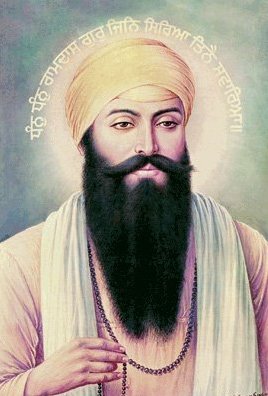The Birthday of Guru Ram Das
(Celebrating in Amritsar)
 The day was warm, but not too hot. The sun shone clear over Amritsar and the minarets of the Akal Takht glinted over the walls of the Golden Temple complex walls. It was difficult to move. Walking was more like wading through a rushing sea of people; pilgrims come to celebrate the birth of Guru Ram Das Ji.
The day was warm, but not too hot. The sun shone clear over Amritsar and the minarets of the Akal Takht glinted over the walls of the Golden Temple complex walls. It was difficult to move. Walking was more like wading through a rushing sea of people; pilgrims come to celebrate the birth of Guru Ram Das Ji.
Guru Ram Das, continuing with the vision of his Guru, Amar Das, built Amritsar from nothing. The pool around which the city would be built dates back in legend to the bathing and meditation place of Lord Krishna. Guru Nanak Dev's travels seemed to crisscross the place and Guru Ram Das would be the one to plan the area for development. Guru Ram Das planned Amritsar as a sanctuary for all. A master of Ayurveda, he designed herbal gardens full of medicinal plants to surround the pool and dharamsals, rest houses, for weary travellers to mend their illness and injuries. In effect, Guru Ram Das created not just a place of spiritual contemplation, but an entire community hinged on the healing and service of others.
Centuries later, the legacy lives on. Anyone can still come to the Pool of Immortality and get a free hot meal and inexpensive place to sleep. Pilgrims come to hear the Guru's poetry, serve others, and rest. For this, the celebration of his birth is unlike any other day in Amritsar.
To walk the streets around the complex is to be taken into a rushing stream. People serve food, music blares, and every school, organization, and community in Amritsar has a troop of people to participate in the Nagar Kirtan, a massive parade full of Gurbani Kirtan, gatka, and food. It's the best kind of sensory overload. People line the streets to watch the procession handing out sweets and offering smiles.
Most impressive, though, is the Harimandir itself at night. The entire place is strung with white lights lining every building and dome. As is tradition, outside of the complex in the Manji Sahib, there is a Raag Darbar. Raag Darbars are gurdwaras held to share the Guru's bani exclusively in the classical Indian modes in which they were written. Renowned musicians like Bhai Balbir Singh and the Jetha of Bhai Dilbag and Gulbag are in attendance. Not only sharing the Guru's bani, but each jetha's artful method of sharing the bani. Deeply moving alaps and rapid fire taans bring the music to life expressing the deep longing, love, and courage in each poem.
As the Darbar winds down, blazing white fireworks explode over the water of the Harimandir, mimicking the bright bulbs that line the buildings below. It is as if the Harimandir's light is above, and below at the same time: the white lights reflected in the pool and the white lights bursting above. With each pop, pilgrims gaze up at the sky, light glinting in their eyes and shouts of Sat Sri Akal (Truth Great and Timeless) ring through the air, the memory of the Lord of Miracles, Guru Ram Das, shining like the fireworks above.
"This story republished courtesy of Sikh Dharma Worldwide"

